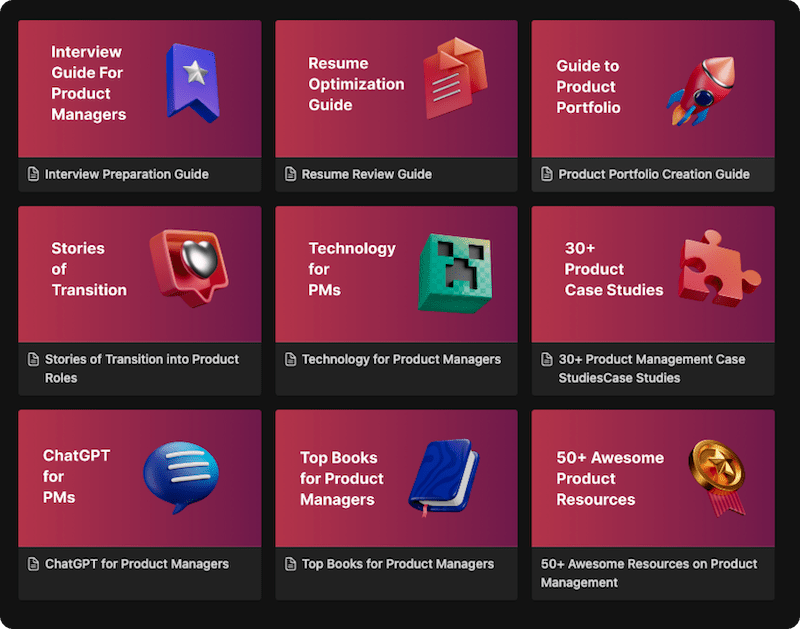Book Summary of Inspired: How to Create Tech Products Customers Love by Marty Cagan
About the Book
“Inspired: How to Create Tech Products Customers Love” by Marty Cagan is a highly regarded guidebook for product managers and product teams in the tech industry. Cagan shares his extensive experience and provides practical advice on building successful and customer-centric technology products. The book emphasizes the importance of understanding user needs, fostering a strong product culture, and employing effective product management techniques to deliver valuable and delightful products that resonate with customers.
Important Lessons from the Book
- User-Centric Mindset: Place customers at the center of product development, continuously seeking to understand their needs, pain points, and aspirations.
- Product Vision: Develop a clear and inspiring vision that defines the purpose, value proposition, and direction of the product, guiding decision-making and prioritization.
- Discovery and Validation: Conduct rigorous product discovery to validate assumptions, test ideas, and gather user feedback before committing resources to building features.
- Cross-Functional Collaboration: Foster effective collaboration between product managers, designers, engineers, and other stakeholders, ensuring shared understanding and alignment.
- Minimum Viable Products (MVP): Embrace the concept of MVPs to iteratively release and validate product features, gaining valuable insights and reducing waste.
- Product Experimentation: Encourage a culture of experimentation, allowing for risk-taking, learning from failures, and leveraging data to drive product decisions.
- Continuous Improvement: Embrace a mindset of continuous improvement, seeking feedback, monitoring metrics, and refining products based on user insights and market dynamics.
Mistakes to Avoid
- Building Without Understanding: Avoid building products based on assumptions and guesses. Invest time in user research and understanding customer needs to inform product decisions.
- Feature-Driven Thinking: Shift focus from feature-driven development to problem-solving and value creation for users. Don’t get caught up in building features without addressing core needs.
- Lack of User Validation: Don’t skip or rush the process of validating ideas with real users. Test assumptions and gather feedback to ensure the product aligns with user needs.
- Disconnected Design and Development: Avoid disconnect between design and development teams. Foster collaboration and ensure design solutions are technically feasible and implemented effectively.
- Overcommitting and Overpromising: Be realistic with product timelines and avoid overcommitting on features or deadlines without considering resource constraints and complexity.
- Ignoring Feedback and Data: Don’t ignore user feedback and data. Actively collect, analyze, and leverage data to inform product decisions and drive continuous improvement.
- Lack of Focus and Prioritization: Avoid spreading resources too thin or trying to cater to every user request. Prioritize features and initiatives based on user needs and business value.
Essential Action Steps to Take
- User Research and Persona Development: Conduct thorough user research to understand target users and develop personas that capture their needs, motivations, and pain points.
- Define a Compelling Product Vision: Craft a clear and inspiring product vision statement that communicates the product’s purpose, target audience, and desired outcomes.
- Embrace Agile and Lean Principles: Adopt agile and lean practices to enable iterative development, rapid feedback loops, and continuous learning.
- User Story Mapping: Utilize user story mapping techniques to visualize the user journey, prioritize features, and align product development efforts.
- Test Early and Often: Implement a rigorous product discovery process, including user testing, prototyping, and validation, to ensure product-market fit.
- Foster Collaboration and Communication: Establish effective channels of communication and collaboration among product teams, stakeholders, and users to align efforts and share insights.
- Measure and Iterate: Define key metrics and use data-driven insights to measure product success, identify areas for improvement, and iterate on features and experiences.
The Conclusion from the Book
“Inspired: How to Create Tech Products Customers Love” by Marty Cagan serves as a valuable resource for product managers and teams looking to create successful tech products. By adopting a user-centric mindset, leveraging effective product management techniques, and fostering a culture of continuous improvement, organizations can build products that truly resonate with customers and drive business success in the ever-evolving technology landscape. Cagan’s book empowers product teams with practical guidance and real-world examples, inspiring them to create exceptional products that customers love.

 WATCH HELLOPM COHORT IN ACTION
WATCH HELLOPM COHORT IN ACTION


